Executive Summary
Ayatollah Ruhollah Khomeini, founder of the Islamic Republic of Iran and the country’s first supreme leader, is one of the most influential shapers of radical Islamic thought in the modern era.
Khomeini’s Islamist, populist agenda—dubbed “Khomeinism” by scholar Ervand Abrahamian—has radicalized and guided Shiite Islamists both inside and outside Iran. Khomeini’s legacy has directly spawned or influenced major violent extremist organizations, including Iran’s Islamic Revolutionary Guard Corps (IRGC), as well as Lebanese-based terrorist organization and political party Hezbollah, and the more recently formed Iraqi-based Shiite militias, many of which stand accused of carrying out gross human rights violations. (Sources: BBC News, Atlantic, Reuters, Washington Post, Human Rights Watch, Constitution.com)
Khomeini’s defining ideology focuses on a variety of themes, including absolute religious authority in government and the rejection of Western interference and influence. Khomeini popularized the Shiite Islamic concept of vilayat-e faqih—which translates to “guardianship of the Islamic jurist”— in order to place all of Iran’s religious and state institutions under the control of a single cleric. Khomeini’s successor, Supreme Leader Ayatollah Ali Khamenei, relies on Khomeinist ideals to continue his authoritarian domestic policies and support for terrorism abroad. (Sources: Al-Islam, Khomeinism: Essays on the Islamic Republic, Ervand Abrahamian, pp. 15-25, Islamic Parliament Research Center, New York Times)
More than 25 years after his death, Khomeini’s philosophies and teachings continue to influence all levels of Iran’s political system, including Iran’s legislative and presidential elections. In an interview with Iran’s Press TV, London-based professor of Islamic studies Mohammad Saeid Bahmanpoor said that Khomeini “has become a concept. He has surpassed his bounds of individuality.” As noted by Iranian scholar Ali Reza Eshragi, “politics in Iran are largely defined by attempts to claim Khomeini’s legacy. Staying faithful to his ideology has been the litmus test for all political activity in the Islamic Republic.” (Sources: Al-Monitor, New Republic, Press TV, Asia Times)
Khomeinist Doctrine
“If you do not surrender to the nation, the nation will put you in your place.”
Ruhollah Khomeini, February 1979
Ayatollah Ruhollah Khomeini believed in the supremacy of Islam. He framed his revolutionary state—the Islamic Republic of Iran—as the guardian of Islam, protecting the religion against what he perceived as blasphemy from the West. (Sources: Al-Islam, Khomeinism: Essays on the Islamic Republic, Ervand Abrahamian, p. 23-25, Islamic Parliament Research Center)
Charged with this responsibility, Khomeini sat atop this regime as the country’s so-called supreme leader, wielding absolute authority over Iran’s economic, religious, and military policies. Since his death in 1989, The Iranian regime has continued to use Khomeinist doctrines to justify its policies of harsh domestic suppression and support for global terrorism. (Sources: Al-Islam, Khomeinism: Essays on the Islamic Republic, Ervand Abrahamian, p. 23-25, Islamic Parliament Research Center, Constitution.com)
Vilayat-e Faqih (“Guardianship of the Islamic Jurist”)
“God has formed the Islamic Republic.
Ruhollah Khomeini, 1941
Obey God and his Prophet and those among you who have authority.”
Khomeini claimed absolute power as Iran’s first supreme leader. In so doing, he relied on a re-interpretation of the ninth-century Shiite philosophy of vilayat-e faqih—guardianship of the Islamic jurist. Khomeini said that an appointed jurist should have final authority over Iran’s political and religious spheres in order to ensure compliance with “divine law,” since only then could such a government be “accepted by God on Resurrection Day.” Khomeini’s controversial interpretation of vilayat-e faqih differed greatly from traditional Shiite interpretations, in which scholars believed that in an Islamic state a learned jurist could be endowed with religious authority while leaving political authority in the hands of the state. The regime’s implementation of vilayat-e faqih was the first of its kind in a modern nation-state. (Sources: Al-Islam, Hudson Institute, New York Times, Oxford Dictionary of Islam, Oxford Dictionary of Islam, Oxford Dictionary of Islam)
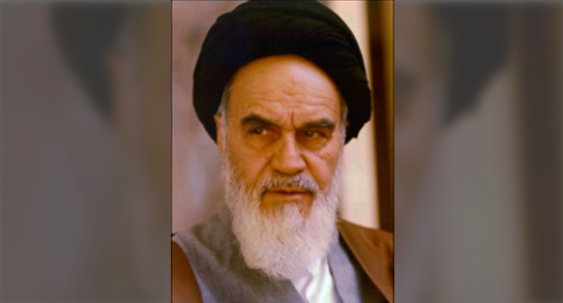
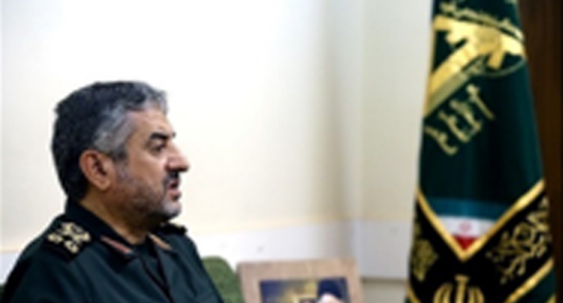
Per Khomeini’s revival of the concept, Iran has enshrined vilayat-e faqih into its constitution, thereby justifying the authoritarian role of the country’s supreme leader. Iran has also used this doctrine to retain the loyalty of its army and terrorist proxies. Iranian law makes “belief and commitment to” vilayat-e faqih a prerequisite for membership in the country’s repressive IRGC forces. Shiite militias such as Hezbollah, Badr Organization, Kata’ib Hezbollah, and Asaib Ahl al-Haq also subscribe to vilayat-e faqih, with members swearing allegiance to Iran’s supreme leader. (Sources: Constitution.com, Islamic Parliament Research Center, New York Times, Christian Science Monitor)
In 1979, Khomeini established the practice of vilayat-e-faqih in Iran, endowing himself with unprecedented power as the first “guardian jurist.” Since then, Iranians who challenge the authority of the supreme leader face ostracism, lengthy prison sentences, or worse. In 1989, Khomeini dismissed Grand Ayatollah Hossein Ali Montazeri as his heir-apparent for criticizing Khomeini. Montazeri and other ayatollahs—like Grand Ayatollah Seyed Mohammad Kazem Shariatmadari—were ultimately placed under house arrest for publicly opposing or criticizing the supreme leader. (Sources: Ervand Abrahamian, Tortured Confessions, p. 209-228, Amnesty International, Telegraph, Telegraph, Associated Press, BBC News, New York Times, Telegraph, International Campaign for Human Rights in Iran)
Iran’s authoritarian and repressive regime has continued under Khomeini’s successor, Ayatollah Ali Khamenei. As with Khomeini’s regime, those who opposed Khamenei’s positions have typically been met with harassment and intimidation. In 1997, Human Rights Watch condemned the physical harassment of reformist Iranian scholar Dr. Abdol Karim Soroush by what were believed to be government-sanctioned mobs. Khamenei also created a network of so-called “clerical commissars,” agents loyal to Khamenei that were installed in multiple levels of the government, military, and clergy. (Sources: New York Times, Washington Institute for Near East Policy, Carnegie Endowment for International Peace, U.S. Institute of Peace, Washington Institute for Near East Policy, Human Rights Watch)
Khamenei also exerts near-total control over Iranian political figures, including Iranian presidents. From 1997 to 2005, Khamenei obstructed many of the reform efforts by Iranian President Mohammad Khatami, who sought to loosen the judiciary and other state organs from the supreme leader’s control. In August 2000, Khamenei instructed the parliament to end a debate over whether Iran’s press laws were suppressing the media. Khatami announced the failure of his reform agenda in 2003 and left office in 2005. He has continued to advocate for government reform in spite of opposition from Khamenei’s government. Iran’s justice department declared media blackouts on Khatami in 2010 and again in 2015, despite promises by President Hassan Rouhani to loosen restrictions on the media and freedom of expression. (Sources:Chicago Tribune, National Interest, BBC News, BBC News, Guardian)
Khatami was not the only target of Khamenei’s government. The regime has placed other reformist officials under house arrest, and security forces have responded to peaceful protests with violent crackdowns. After contested presidential elections in 2009, IRGC commander Mohammad Ali Jafari told Iranian media that anyone speaking against the government would be labeled an enemy of the state. Indeed, the IRGC’s Basij militia—a paramilitary organization tasked with maintaining domestic support for the Revolution—reportedly used clubs and chains to attack anyone suspected of protesting. (Sources:New York Times, Human Rights Watch)
Dissidents continue to suffer in Iran today. A 2015 U.S. State Department report noted the Iranian government has “banned, blocked, closed, or censored publications deemed critical of officials.” Iran also enforces the death penalty for “insults against the memory of Imam Khomeini and against the supreme leader of the Islamic Republic.” As recently as March 2017, the Iranian government continues to arrest journalists and online activists for crimes such as insulting state authorities, insulting religious officials, and insulting the supreme leader. (Sources: International Campaign for Human Rights in Iran, Committee to Protect Journalists, U.S. Department of State, Reuters, CNN, U.N. Special Rapporteur on the Situation of Human Rights in the Islamic Republic of Iran, U.N. Special Rapporteur on the Situation of Human Rights in the Islamic Republic of Iran)
Ahead of Iran’s May 19, 2017, presidential elections, Khamenei again asserted his supreme authority by warning that he would intervene if the Iranian people did not accept the elections outcome. Despite Iran’s claims of free and fair elections, all candidates must first earn Khamenei’s approval to enter the race. In April 2017, former Iranian President Mahmoud Ahmadinejad declared his intention to run again, dismissing Khamenei’s recommendation against it as “just advice.” A week later, Iran’s Guardian Council, beholden to Khamenei, disqualified Ahmadinejad and more than 1,600 other candidates from participating in elections. (Sources: Al-Monitor, Reuters, Guardian, Guardian, Reuters, CNBC)
Khamenei wields similar influence over Iran’s legislative elections, where legislative candidates are also vetted by the Guardian Council, half of whose members are appointed directly by Khamenei. The supreme leader also appoints Iran’s judiciary chief, who nominates candidates to the parliament for the remaining six positions in the Council. Although there were some 12,000 people registered to run in the country’s February 2016 parliamentary elections, for example, the Guardian Council had the authority to whittle the list down to 6,000 candidates. (Sources: Reuters, BBC News, New York Times, Deutsche Welle, Reuters, U.S. Institute of Peace, Constitution.com)
Blasphemy
“I hereby inform all proud Muslims worldwide that the author of the book ‘The Satanic Verses,’…as well as those publishers who are aware of its contents, are sentenced to death.”
Ruhollah Khomeini, 1989
Khomeini believed that his 1979 revolution restored Iran’s Islamic character. As such, he charged Iran with defending Islam against blasphemy and “expanding the influence of Islam in the world.” Khomeini’s attitudes have translated into human rights violations both at home and abroad. In Iran, “enmity towards God” is a crime punishable with the death penalty. At least nine people were executed in 2014 for this broadly interpreted “crime.” According to the U.S. State Department, journalists and political dissidents are frequently charged with “enmity towards God” and are accused of “struggling against the precepts of Islam and against the state that upholds those precepts.” The government’s self-perception as a guardian of Islam has also inspired the regime to seek out perceived apostates outside Iran’s borders for punishment. (Sources: Al-Islam, New York Times, U.S. Department of State, Human Rights Watch, Iran Human Rights Documentation Center)
In 1989, six months after British novelist Salman Rushdie published his controversial novel The Satanic Verses, Khomeini issued a fatwa sentencing Rushdie and his publishers to death in absentia on charges of insulting Islam. According to Khomeini, the book—inspired by the life of the Islamic prophet Muhammad—ran counter to the tenets of “Islam, the Prophet and the Koran….” Days after Khomeini issued his fatwa, Rushdie issued a public apology for “the distress that [his] publication has occasioned to sincere followers of Islam.” Khomeini promptly rejected the apology. Days after Rushdie’s response, Khomeini renewed his call to violence, urging Muslims around the world to “send [Rushdie] to hell.” (Sources: New York Times, New York Times, New York Times, United Press International)
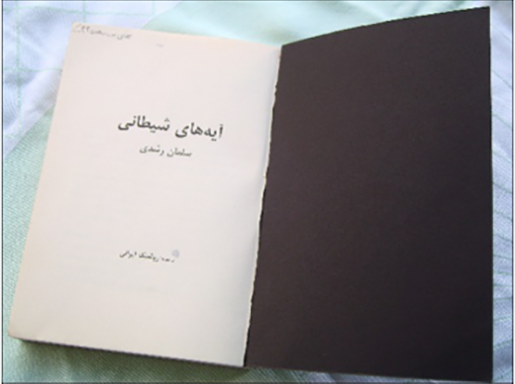
The global response to Khomeini’s fatwa was a mix of concern and criticism. Rushdie went into hiding under police guard. Former U.S. President Jimmy Carter called The Satanic Verses a “direct insult” to millions of Muslims but condemned the fatwa as an “abhorrent response.” Author Roald Dahl accused Rushdie of “sensationalism” to “get an indifferent book on to the top of the bestseller list.” (Sources: Guardian, New York Times, Los Angeles Times)
Nonetheless, the fatwa succeeded in inspiring individuals around the world to violence. Since 1989, there have been at least five attacks against Rushdie and others involved in publishing, translating, and distributing the book worldwide.
Lone-Wolf Violence Inspired by Khomeini’s Fatwa Targeting Salman Rushdie
On August, 3, 1989, an unidentified 21-year-old man of Lebanese descent died in an accidental explosion in a London hotel room while reportedly preparing a bomb to use against Rushdie. A cenotaph in his honor was later erected in Tehran, describing him as “the first martyr to die on a mission to kill Salman Rushdie.” (Source: Times of London)
On July 3, 1991, Ettore Capriolo, the Italian translator of Salman Rushdie’s The Satanic Verses, survived a stabbing attack in Milan. Police say the assailant claimed to have a “connection” to the Iranian embassy in Rome. Weeks later, on July 12, 1991, Hitoshi Igarashi, a professor of comparative literature and the Japanese translator of Salman Rushdie’s The Satanic Verses, was stabbed to death in Tokyo by an unidentified attacker. (Source: New York Times)
Attacks continued for years. On October 11, 1993, unidentified attackers shot William Nygaard, CEO of a Norwegian publishing house that had printed Salman Rushdie’s The Satanic Verses, near his home in Oslo. He was wounded but survived. His attackers were never caught, although Nygaard believes the attack was related to Khomeini’s fatwa, noting: “One of the suspects in the case bought a one way ticket to Iran in cash the day after the attack, and possessed the same kind of weapon and the same kind of ammunition as those involved in the shooting.” (Sources: Times of London, New York Times, Guardian)
On August 12, 2022, Hadi Matar of New Jersey attacked Rushdie with a knife and stabbed him in the neck while he was giving a lecture at the Chautauqua Institution in western New York. Rushdie was taken for emergency surgery. Matar was charged with second-degree attempted murder and assault. Matar had reportedly been in direct contact with members of the IRGC on social media, according to international intelligence reports. An Iranian government spokesman denied any Iranian involvement but justified the attack because of Rushdie’s perceived insult against Islam. Matar told the New York Post he had read only a few pages of Rushdie’s book but accused Rushdie of attacking Islam and its beliefs and said he didn’t think Rushdie was a good person. Matar denied reports he had any contact with the IRGC, but he praised Khomeini as a “great person” and admitted his respect for the ayatollah. Following the attack, Rushdie lost sight in one eye and use of one of his hands. (Sources: Associated Press, Guardian, New York Times, Vice, Associated Press, CNN, New York Post, Reuters)
In addition to inspiring assassination attempts, Khomeini’s fatwa also set a dangerous precedent regarding global Islamist violence toward satirists, cartoonists, and authors.
In 2004, Dutch filmmaker Theo van Gogh was murdered by an Islamic extremist who considered van Gogh’s film Submission—exploring violence against women in Islamic societies—to be an insult to Islam. In 2005, Danish newspaper Jyllands-Posten published a series of cartoons depicting the Islamic prophet Muhammad, a move that spurred violent attacks targeting the paper, the cartoonist, and Danish interests in the Middle East. In the surrounding controversy, Hezbollah leader Hassan Nasrallah aligned himself with the assailants, claiming that if a Muslim had succeeded in assassinating Rushdie, “this rabble who insult our Prophet Mohammed in Denmark, Norway and France would not have dared to do so.” (Sources: New York Times, New York Times, BBC News, Agence France-Presse)
The influence of Khomeini’s fatwa can be seen as recently as the January 2015 Charlie Hebdo attacks in Paris. On January 7, two gunmen operating on behalf of al-Qaeda’s Yemeni affiliate—al-Qaeda in the Arabian Peninsula—attacked the offices of French satirical magazine Charlie Hebdo in retaliation for the magazine publishing Muhammad cartoons. Following the shooting, Iran’s semi-official Ansar-e Hezbollah militia praised the attacks as “legitimate punishment” of those who had insulted the Islamic prophet. (Sources: Agence France-Presse, Radio Free Europe Radio Liberty)
The influence of Khomeini’s fatwa can also be seen in the successful terrorizing of artists into self-censorship. In 2009, filmmaker Roland Emmerich reportedly cut a scene from his disaster film 2012 blowing up Islam’s holiest mosque because his co-writer feared repercussions. Director Kevin Smith also reportedly cited concern of a “death warrant” in his decision to abandon an Islam-centric sequel to his 1999 film Dogma. In 2010, cable network Comedy Central censored an episode of South Park that portrayed Muhammad after death threats were made against the writers. (Sources:Guardian, Guardian, New York Times)
Khomeini’s principles are also used to justify crackdowns against speech deemed to be insulting to Islam or God. According to Oslo-based non-profit group Iran Human Rights, 25 percent of Iran’s 969 executions in 2015 were for crimes of moharebeh, waging war against God. As of February 2016, two heavy-metal musicians faced the possibility of execution for charges of blasphemy. In August 2016, Iran executed 20 Kurds accused of belonging to a terrorist organization. They were officially charged with enmity against God. (Sources: Iran Human Rights, Fox News)
Though former Iranian president Mohammad Khatami rebuked the Rushdie fatwa in 1998, Khomeini’s successor, Khamenei, clarified in 2005 that the death sentence remained in effect. When the United Kingdom knighted Rushdie in 2007, Pakistani radicals—including members of the government—clamored for his death. In February 2016, 40 Iranian state-run media outlets offered a $600,000 joint reward for Rushdie’s murder. Affiliated with Iran’s supreme leader, the Iranian charity 15 Khordad Foundation has maintained a multi-million-dollar bounty on Rushdie since 1989. In 2012, the foundation raised its reward to $3.3 million and promised the full sum would be immediately paid to whoever kills Rushdie. The U.S. government levied sanctions on the foundation in October 2022. (Sources: BBC News, USA Today, U.S. Department of the Treasury)
Anti-Imperialism as an Excuse for Terrorism
“The foreign hands must be cut off from this nation. How much should the United States loot this country? How much Britain and other powers? We must resurrect ourselves, wake up, and take back our freedom.”
Ruhollah Khomeini, February 6, 1979
Khomeini blamed Iran’s perceived social, political, and economic problems on foreign interference and nurtured terrorist movements like Hezbollah under the guise of fighting imperialist oppression. Khomeini accused Western imperialist powers of exploiting Iranian resources and impoverishing its people through exploitative trade and commercial policies. Khomeini justified Iranian support for international terrorism as part of an effort to “smash the hands and the teeth of the superpowers” and free other nations from so-called Western manipulation and exploitation. (Sources: New York Times, BBC News, Guardian)
Iranian support for terrorism dates back to at least 1982, when Iran provided material and financial support for Hezbollah. Later, in 1987, Khomeini pledged Iranian support for “all Islamic struggles of nations and courageous and Moslem young people.” Since then, Iran has continued to justify its adversarial role with the West and support for terrorism as resistance to Western imperialism and oppression. Indeed, Iran’s constitution enshrined Khomeini’s anti-imperialist views in a clause calling for “entrusting the destinies of the people to the people themselves” against “the system of oppression,” seemingly providing constitutional justification for supporting violent revolutionary groups. (Sources: Khomeinism: Essays on the Islamic Republic, Ervand Abrahamian, p. 122, 124, Institute for Compilation and Publication of Imam Khomeini’s Works, PBS, New York Times, Constitution.com)
A prime example can be seen through Iran’s aid to Hezbollah. Khomeinist networks began infiltrating Lebanon in the 1970s ahead of Iran’s revolution in order to promote anti-shah activities unhindered. Despite the popular belief that Hezbollah was founded to repel the Israeli invasion of Lebanon, these cells laid the groundwork for Hezbollah a decade before the group officially formed. Khomeini’s government created the Office of Liberation Movements (a precursor of the IRGC’s Quds Force) to liaise with foreign so-called revolutionary movements, beginning with these Lebanese networks. In 1982, the IRGC began providing financial and material support to Lebanese Shiite militants who later would form Hezbollah. (Sources: Foundation for Defense of Democracies,Weekly Standard)
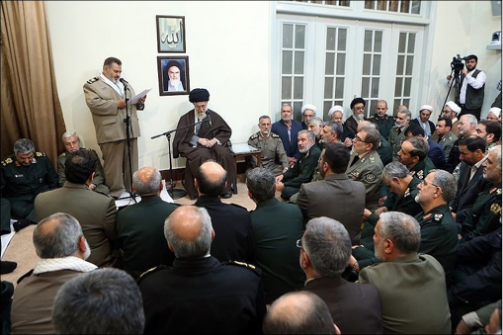
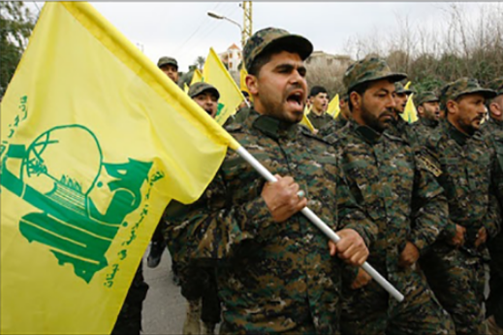
This proto-Hezbollah group began attacking U.S., French, and Israeli forces in Lebanon. Representatives of the group—which later called itself Hezbollah—traveled to Tehran to receive Khomeini’s official blessing of their activities. In 1985, Hezbollah announced its formation and declared its allegiance to Khomeini. In the manifesto released later that year, Hezbollah declared its commitment to “save Lebanon from its dependence upon East and West, to put an end to foreign occupation and to adopt a regime freely wanted by the people of Lebanon.” (Sources: BBC News, Foundation for Defense of Democracies, Weekly Standard,Al-Akbar, Atlantic, PBS, Asharq al-Awsat, Council on Foreign Relations)
Since Khomeini’s death in 1989, the IRGC has continued to heed his directive to support so-called liberation groups fighting against perceived imperialism. Beginning in the 1990s, Iran has provided financial and material support to Hamas and Palestinian Islamic Jihad (PIJ), which have carried out horrific suicide bombings and other attacks in Israel, the West Bank, and Gaza Strip. Following the 2003 U.S. invasion of Iraq, Iran has supported Iraqi Shiite militias in carrying out attacks against U.S. coalition forces. (Sources: New York Daily News, ABC News, Reuters)
The Iranian government also uses Khomeini’s anti-imperialist views as domestic propaganda in projecting an image as the leading challenger to Western domination. In April 2016, for example, Khamenei claimed that the so-called “Imperialist Front” of the West was bringing its culture into Iran in order to destroy the “spirit of the Revolution” and the country’s moral character. Months earlier, Khamenei had ordered the IRGC to confront Western influence by “increasing its persuasive, logical and expressive strength regarding the Islamic Revolution.” (Sources: Tasnim News Agency, Mehr News Agency, Al-Monitor)
In line with Khomeini’s anti-imperialist stance, the Iranian government continues to blame foreign interference for its domestic problems. For example, the government blamed U.S. and U.K. intervention for the country-wide protests that erupted after Iran’s contested 2009 presidential elections. Basij commander Mohammad Reza Naqdi specifically accused the United Kingdom of seeking to “return to the black era of colonialism by sowing discord and creating distance between the Iranian people and the pivot of Islam and unity.” (Sources: Fars News Agency, Fars News Agency, Christian Science Monitor)
Iran’s Primary Enemy: the United States
“All our troubles today are caused by this America.”
Ruhollah Khomeini, October 26, 1964
Khomeini called the United States “the foremost enemy of Islam,” casting it as the root cause of Iran’s troubles and the leader of an international anti-Islamic front. In response, Iranian-sponsored terrorist groups and actors have frequently targeted U.S. interests, beginning with the 1979 hostage crisis and continuing through the present day. In addition to nurturing anti-U.S. terrorist activities, the Iranian government has also propagated anti-American rhetoric domestically and abroad, including through leaders’ oft-repeated mantra, “Death to America.” (Sources: Al Seraj, Institute for Compilation and Publication of Imam Khomeini’s Works)
Since the hostage crisis in 1979, Iran has continued to support anti-American terrorist groups. The United States has, for example, accused Iranian-sponsored Hezbollah of the 1983 Marine Barracks attack in Lebanon, which killed 241 U.S. service personnel. U.S. military officials have also blamed Iran and its proxies for the deaths of more than 500 U.S. soldiers in Iraq between 2005 and 2011. In 2011, the IRGC allegedly worked with Mexican drug cartel Los Zetas in failed plots against the Saudi ambassador and Israeli embassy in Washington, D.C. (Sources: New York Times, Al Seraj, Carnegie Endowment for International Peace, CNN, New York Times, Washington Times, CNN, New York Times, New York Times, CNN)
In addition to targeting U.S. interests abroad, the Iranian government targets Iranian-American dual citizens in Iran. According to the U.S. State Department, the government frequently arrests Iranian-Americans on charges of espionage or disrupting national security, if they are ever charged at all. These prisoners are often held in maximum-security prisons and given limited-to-no access to legal counsel, an approach that has led American media outlets and government officials to label them hostages of the Iranian regime. (Sources: Wall Street Journal, NBC News, Los Angeles Times, U.S. Department of State)
1979 Hostage Crisis
Khomeini returned to Iran from his 14-year exile in February 1979, shortly after Iranian Shah Mohammad Reza Pahlavi left the country for medical treatment. After mass protests and bloody battles between Khomeini’s followers and the Iranian military, Khomeini announced the new Islamic Republic of Iran on April 1, 1979. (Sources: PBS, BBC News)
In October 1979, Mexican doctors recommended that Pahlavi receive treatment in the United States, where the shah was soon given refuge. On November 4, 1979—the 15th anniversary of Khomeini’s exile from Iran—students protesting U.S. support of the shah stormed the U.S. embassy in Tehran. The assailants took 90 people hostage, including 66 Americans. Later that day, Khomeini issued a statement in support of the students, who demanded the shah’s extradition. (Sources: CNN, CNN, Al Jazeera)
The conflict quickly escalated. On November 5, Iran canceled its military treaties with the United States and Soviet Union. Khomeini released 38 hostages in the following months, but retained 52 Americans. After the shah died of cancer in July 1990, Khomeini demanded that the United States unfreeze Iranian assets and transfer the shah’s wealth to Iran in exchange for the hostages’ release. (Sources: CNN, Jimmy Carter Presidential Library & Museum)
The crisis finally ended on January 20, 1981, when the remaining 52 hostages were released after the United States and Iran signed the Algiers Accords. Iran agreed to release the hostages in exchange for U.S. pledges to free Iranian assets and desist from interfering in internal Iranian affairs. The United States and Iran did not agree to restore formal diplomatic ties, and have instead maintained an adversarial relationship since the crisis. As a reminder of the incident, the former U.S. embassy in Tehran has been preserved as an Islamic culture center and museum, outside of which Iranians are frequently recorded chanting, “death to America.” (Sources: BBC News, CNN, PBS, CNN)
Iranian authorities rarely justify the arrests when they are made, according to media reports. In August 2016, the U.S. State Department warned American citizens against traveling to Iran because of the “risk of arrest and detention of U.S. citizens, particularly dual national Iranian-Americans” by the Iranian government, which continues “to unjustly detain and imprison U.S. citizens.” (Sources: Wall Street Journal, NBC News, Los Angeles Times, NPR, U.S. Department of State)
Among those held by Iran was Iranian-American Washington Post reporter Jason Rezaian, arrested with his Iranian wife, Yeganeh Salehi, in July 2014. Salehi was soon released, but Rezaian was convicted of what the New York Times called “vague charges of espionage” in October 2015. Rezaian was part of a January 2016 prisoner swap that resulted in the release of four imprisoned Iranian-Americans. In October 2016, Rezaian filed a lawsuit in U.S. federal court accusing Iran of torture, and of using him as leverage in its nuclear negotiations with the West. (Sources: New York Times, CNN)
Since Iran signed its 2015 nuclear deal with world powers, at least four dual Iranian-U.S. citizens have been arrested on vague charges of threatening national security, as the government does not always publicize or justify the charges. Karim Sadjadpour of the Carnegie Endowment for International Peace believes that the arrests of Iranian-Americans serve to discourage Iranian diaspora businessmen from competing economically with the IRGC’s business ventures, while also sabotaging government moderates. (Sources: New York Times, NPR, Washington Post)
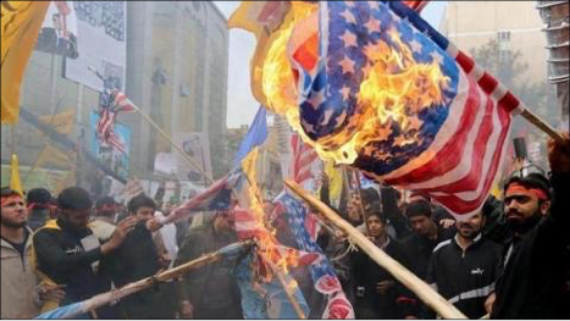
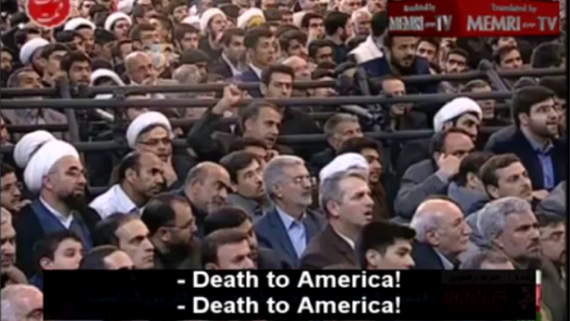
In addition to arbitrarily arresting U.S. citizens, the Iranian government continues to espouse and promote anti-American rhetoric. Like Khomeini, Supreme Leader Ali Khamenei claims that the United States seeks Iran’s “submission and surrender.” In June 2015, on the 26th anniversary of Khomeini’s death, Khamenei praised his predecessor for labeling the United States “the Great Satan.” Khamenei has himself labeled the United States the head of “the oppressors’ front,” which can be confronted only through “battle and jihad.” In 2014, Quds Force head Qasem Soleimani implored God to damn the United States, “the chief propagator of injustice and oppression in the world,” and “any oppressor” that supports Israel. (Sources: CNN, Jakarta Post, MEHR News Agency, Fars News Agency, Al-Monitor, Washington Free Beacon, Jerusalem Center for Public Affairs)
Mimicking Khomeini’s suspicion of U.S. and Western influence in Iran, Khamenei has also warned Iranians against foreign influence and corruption. In a January 2016 letter to President Hassan Rouhani, Khamenei warned of the “deceptions and breaches of promises by arrogant governments, in particular America.” In September 2015, Khamenei warned Iranians to be vigilante against “the enemy’s political and cultural infiltration.” He charged the IRGC with increasing its “persuasive, logical and expressive strength regarding the Islamic Revolution” to defend against this infiltration. (Sources: Wall Street Journal, New York Times, Al-Monitor)
Iran’s attitude toward the United States—in action and rhetoric—remains a reflection of Khomeini’s 1979 slogan that “America can’t do a damn thing against” Iran. Indeed, the Iranian government has continued to invoke this tagline. In May 2015, Khamenei bragged that the U.S. military “can’t do a damn thing” to Iran, while in July 2016—just months after the implementation of Iran’s nuclear agreement with world powers—Iranian Foreign Minister Mohammad Javad Zarif boasted that the United States “cannot do a damn thing” to interfere in Iranian affairs. (Sources: Foreign Policy,Times of Israel, Times of Israel)
Iran’s Second Enemy: Israel
“As I have often warned both before and after the revolution, I once again remind everyone of the danger of the prevalent, festering and cancerous Zionist tumor in the body of Islamic countries.”
Ruhollah Khomeini, 1987
After the United States, Khomeini considered Iran’s second enemy to be Israel. Khomeini presented Israel as a manifestation of Western imperialism in the region as far back as 1964, when he said that Israel “derives [its existence] from America.” In 1987, Khomeini again warned Muslims against “the danger of the prevalent, festering and cancerous Zionist tumor in the body of Islamic countries.” In that same speech, Khomeini called on Muslim governments to unite against Israel, pledging Iran’s financial and material support to “all those dear ones who continue to deal blows to Israel and its interests.” (Sources: Institute for Compilation and Publication of Imam Khomeini’s Works, Al Seraj, New York Times, Institute for Compilation and Publication of Imam Khomeini’s Works, Institute for Compilation and Publication of Imam Khomeini’s Works)
Drawing on Khomeinist themes of independence and Western imperialism, the Iranian regime has continued to adopt anti-Israel rhetoric. Like his predecessor, Khamenei has labeled Israel a “cancerous tumor that should be cut and will be cut” from the world. He has repeatedly decried “bullying world powers” who “installed” Israel in the Muslim Middle East. Khomeini himself promised Iranian support “for all Islamic struggles of nations and courageous and Moslem young people toward the liberation of Jerusalem.” In 2012, Khamenei reiterated Khomeini’s promised support to any nation or group willing to “confront” Israel. (Sources: New York Times, Telegraph, Washington Free Beacon)
Beyond rhetoric, the Iranian government has continued to actualize Khomeini’s anti-Israel directives as financial and material support for violent anti-Israel extremist groups such as Hezbollah, Hamas, and PIJ. In 1998, a U.S. federal court held Iran responsible for sponsoring the 1995 PIJ bus bombing in the Gaza Strip that killed New Jersey resident Alisa Flatow. The same U.S. court later held Iran responsible for sponsoring Hamas’s 1996 Jerusalem bus bombings that killed Sara Duker of New Jersey and Matthew Eisenfeld of Connecticut. In 2006, Iran reportedly transferred thousands of short-range rockets, longer-range rockets, and unmanned aerial vehicles to Hezbollah. Israeli intelligence estimated that Iran had also directly provided Hezbollah with more than $1 billion between 2006 and 2009. (Sources: New York Daily News, ABC News, Center for Strategic and International Studies, Council on Foreign Relations, Foreign Affairs, Jerusalem Center for Public Affairs)
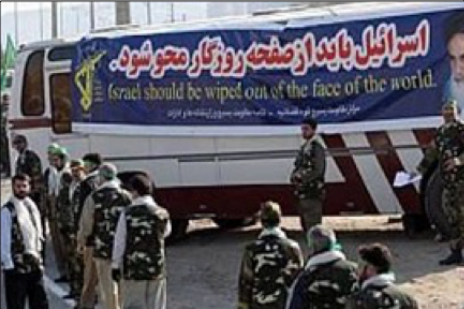
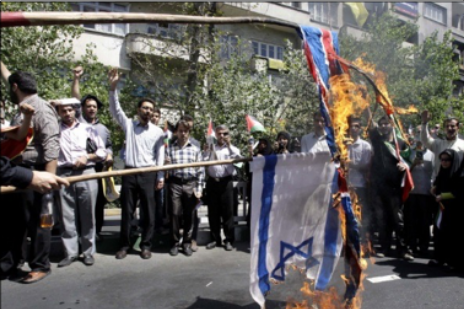
The regime appears to have no qualms publicizing its support of violent anti-Israel groups. The IRGC’s Jafari admitted in 2012 that his organization had provided Hamas with long-range missile technology. In a July 2014 message to the leaders of the al-Aqsa Martyrs Brigades, Hamas’s Qassam Brigade, and other Palestinian terrorist organizations, the Quds Force’s Soleimani praised Iranian support of Palestinian “resistance” as a “religious duty.” That October, Khamenei called the battle against Israel a “war of destiny.” IRGC deputy leader Hossein Salami announced in July 2016 that there are 100,000 missiles in Lebanon—and tens of thousands more around the Middle East—pointed at Israel and “with the push of a button a sinister and dark dot on the political geography of the world disappears forever.” (Sources: CBS News, Islamic Republic News Agency, Fars News Agency, Al Jazeera)
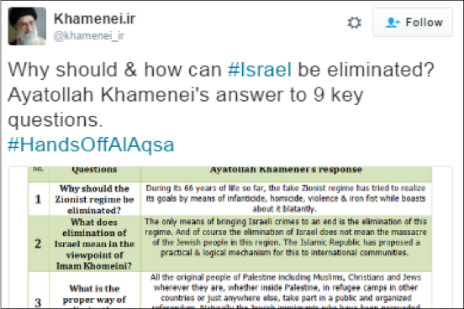
The Iranian government continues to inculcate Khomeinist anti-Israeli rhetoric into Iranian society. Beginning on August 7, 1979, Iran has marked the last Friday of the Islamic holy month of Ramadan as Quds Day (“Jerusalem Day”), a day for Iranian leaders to make anti-Israel and anti-U.S. statements in front of crowds chanting “death to Israel.” Tens of thousands of people—many wearing bandanas emblazoned with the phrase “I love fighting Israel”—reportedly marched through Tehran on Quds Day in July 2016. The ritual has also spread beyond Iran’s borders to Khomeinist acolytes such as Iraqi militia Kata’ib Hezbollah, which also mark Quds Day. (Sources: Islamic Republic News Agency, Islamic Republic of Iran Broadcasting, BBC News, NBC News, Thompson Reuters Foundation, Al Jazeera, Fars News Agency)
Relations with Saudi Arabia and Sunni Arab Nations
Although Khomeini reserved his most virulent rhetoric for the United States and Israel, Arab governments were not spared Khomeini’s wrath. In March 1979, Khomeini accused Egypt of treachery after it signed a peace accord with Israel. Khomeini also accused “vile and ungodly Saudis” of being “like daggers that have always pierced the heart of the Moslems from the back.” (Sources: Institute for Compilation and Publication of Imam Khomeini’s Works, New York Times)
Khomeini simultaneously framed Iran as the defender of all Shiite Muslims in the predominately Sunni Middle East and the representative of all Muslims. He called for unity between Shiites and Sunnis “against Western and arrogant powers.” Khomeini’s antagonism toward Saudi Arabia derived from the historical divisions between Shiism and Sunnism, as well as from Saudi support for Iraq during the Iran-Iraq War. As evidenced by his demands for the Muslim world to revoke Saudi Arabia’s guardianship of Islam’s holy places, Khomeini’s rivalry also stemmed from his desire for Iran to supplant Saudi Arabia as the leader of the Islamic world. (Sources: Atlantic,New York Times, Wilson Center, New York Times)
The Iranian government continues to promote Khomeini’s antipathy for Saudi Arabia through anti-Saudi rhetoric and financial support for anti-Saudi extremist groups. For example, the Iranian-sponsored Hezbollah al-Hejaz group is suspected of carrying out deadly attacks in Saudi Arabia, including the 1996 Khobar Towers bombing. The Iranian government has also armed Houthi rebels fighting against Saudi forces in Yemen and issued anti-Saudi statements, such as September 2016 calls by Khamenei for the global Muslim community to challenge the “heartless and murderous Saudis” for custodianship of Islam’s holiest mosques. Also that month, Khamenei condemned reported Saudi-Israeli meetings, accusing Saudi Arabia of stabbing the Muslim community in the back. In April 2015, the IRGC’s Jafari promised that the “traitor Saudi Arabia” is “on the edge of disintegration and collapse.” (Sources: New York Times, New York Times, Al-Monitor, Al Jazeera, Times of Israel)
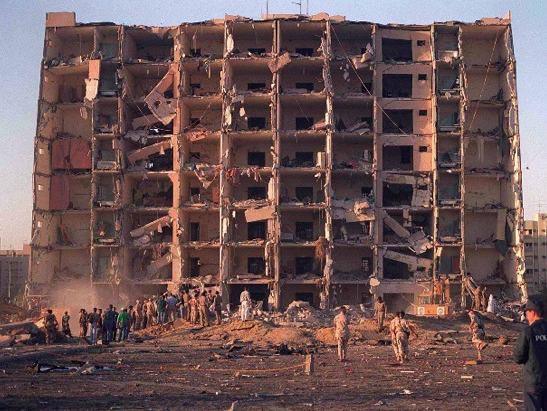
Mistrust and Mistreatment of Minorities
“Christian, Jewish and Baha’i missionary centers are spread in Teheran to deceive people and to lead them away from the teachings and principles of religion. Isn’t it a duty to destroy these centers?”
Ruhollah Khomeini, 1979
Khomeini has accused Iran’s religious minorities—particularly Christians, Jews, and Baha’is—of distorting Islam and fomenting unrest in pursuit of imperialist causes. In his book Islamic Government, Khomeini wrote of the “duty” to destroy Christian, Jewish, and Baha’i religious centers, which he accused of leading Iranians astray. Khomeini’s distrust of minorities has resulted in discriminatory Iranian laws, under which authorities frequently charge minorities with espionage and moral subversion while disproportionately enforcing punishments—such as the death penalty and flogging—against minorities. The U.S. State Department, under advisement of the U.S. Commission on International Religious Freedom (USCIRF), has labeled Iran a “country of particular concern” since 1998 because of its treatment of minorities. (Sources: Jewish Telegraphic Agency, Jewish Telegraphic Agency, U.S. Department of State, U.S. Commission on International Religious Freedom)
Baha’is
According to Iranian law, Zoroastrians, Jews, and Christians are constitutionally protected minorities—albeit as second-class citizens. The Baha’is, on the other hand, reportedly remain the most persecuted minority in Iran, a status that can be traced to Khomeini’s anti-Baha’i propaganda. During the early days of the Iranian revolution, Khomeini reportedly told future U.N. Special Rapporteur Richard Falk that Baha’is are not a “genuine” religion and as such have “no place in Iran.” Since Khomeini came to power, Iranian authorities have killed or executed more than 200 Baha’i leaders, according to the USCIRF, while more than 10,000 Baha’is have been fired from government or university positions. (Sources: Constitution.com, Al Jazeera, CNN, Religion News Service, U.N. High Commissioner for Human Rights)
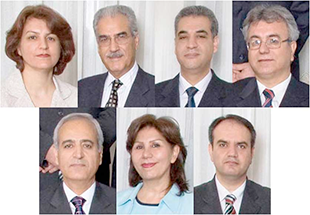
Khamenei has continued his predecessor’s anti-Baha’i decrees. According to a May 2016 column by the USCIRF’s Robert George and Katrina Lantos Swett, Baha’is are “prohibited from attending colleges, chartering their own worship centers or schools, serving in the military, and obtaining various kinds of jobs.” More than 850 Baha’is were arbitrarily arrested between 2006 and 2016, according to George and Swett. In 2008, Iran arrested seven Baha’i leaders and convicted them on charges of espionage, sentencing each to 20 years in prison. In January 2016 alone, 24 Baha’is were arrested and sentenced to a combined 193 years in prison for practicing their religion. In 2013, Khamenei issued a fatwa declaring the Baha’is “deviant and misleading,” and calling on Iranians to avoid “dealings” with them. (Sources: CNN, Religion News Service, U.S. Congress, U.S. Congress, U.S. Congress)
Christians
The Iranian constitution labels Christians a protected minority, but the document did not assuage the fears of Iranian Christians in 1979. That same year, an English translation of Khomeini’s book Islamic Government revealed his belief that Christian and Jewish missionary centers in Iran sought to lead Muslims astray. Khomeini’s rhetoric set an example stronger than Christians’ constitutionally protected status. In 1980, the head of the Episcopal Church of Iran told the New York Times that his church had been subjected to a year of persecution and harassment, including vandalism, the murder of an Episcopalian pastor, and attempts on his own life. He accused groups claiming to represent local Islamic revolution councils of looting churches and taking over church property. (Sources: Jewish Telegraphic Agency, New York Times, New York Times)
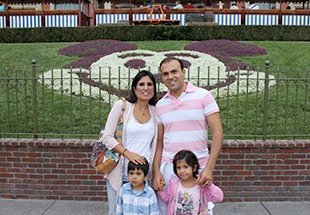
Khomeini also had an uneasy relationship with the Vatican. In November 1979, days after the beginning of the hostage crisis at the U.S. embassy, Pope John Paul II offered to mediate a resolution. Khomeini chastised the pope for not intervening during the shah’s brutal rule. “Those who are pretending to be Christians in the big countries should stop using the name of Christ to cover their treacheries,” Khomeini said in a public speech that month. Though denied by Iran and the Vatican, Mehmet Ali Agca—the man who shot and wounded Pope John Paul II in 1981—has alleged that Khomeini ordered him to assassinate the pope. (Sources: New York Times.Associated Press, News.com.au)
Influenced by Khomeini’s distrust of Christians, the Iranian government has continued to arbitrarily arrest and persecute Iranian Christians, despite their protected status. In 1990, Iran executed Hossein Soodman, who converted to Christianity in 1960, for apostasy. In 2008, the Iranian parliament passed legislation calling for the death penalty for male Iranians who convert out of Islam and life imprisonment for female converts. In 2010, Christian pastor Youcef Nadarkhani was sentenced to death for apostasy for converting to Christianity. He was acquitted in 2012, but rearrested in May 2016 along with his wife and three church members. Nadarkhani and his wife were released, but the church members remained in prison. As of February 2016, about 90 Christians were either imprisoned, awaiting trial, or otherwise detained because of their religious beliefs, according to the USCIRF’s 2016 annual report. The USCIRF recorded at least 550 Christians that had been arbitrarily arrested or detained since 2010. In 2015, the USCIRF reported “numerous incidents of Iranian authorities raiding church services, threatening church members, and arresting and imprisoning worshipers and church leaders, particularly Evangelical Christian converts.” (Source: U.S. Commission on International Religious Freedom, Telegraph, CNN, American Center for Law and Justice, Fox News)
Jews
While in exile in France, Khomeini said in a 1978 interview that Jews in his envisioned Islamic republic would “enjoy all rights and full religious freedom.” Iran’s constitution—ratified the following year—labeled Jews a protected minority in the new Islamic republic, per a fatwa issued by Khomeini. Nonetheless, Khomeini made known his distrust of Jews well known. In 1963, Khomeini reportedly told an Iranian crowd, “I know that you do not want Iran to be under the boot of the Jews.” Later that year, Khomeini claimed that the shah was an undercover Jew who took orders from Israel. In his book Islamic Government, Khomeini blamed the Jews for “distorting the reputation of Islam” and attempting to lead Muslims astray. (Sources: Constitution.com, Vidal Sassoon International Center for the Study of Antisemitism, Jewish Telegraphic Agency)
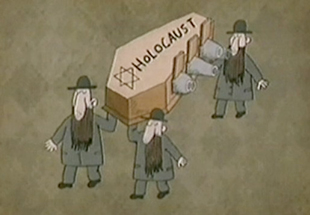
Prior to the revolution, Iran’s Jewish community numbered an estimated 100,000 people. As of 2015, the community numbered about 9,000, according to Iranian census information. Homayoun Sameyah Najafabadi, an Iranian Jewish community leader told the Forward newspaper in August 2015 that while Jews may not face systematic forms of oppression like other minorities, “there are limitations.” For example, voicing support for Israel is illegal in Iran. Though many in Iran’s Jewish community have family in Israel, those who travel to the Jewish state face fines or imprisonment upon their return. And though Jews are allowed to maintain Jewish schools, Muslims are required to serve as principals. According to Najafabadi, a Muslim who kills a Jew has to pay reparations, but a Jew who kills a Muslim faces the death penalty. (Sources: Constitution.com, Jewish Telegraphic Agency, Forward)
The Iranian government has further ingrained anti-Semitism into its dogma through the sponsorship of Holocaust denial-themed conferences and contests. In 2006, an Iranian newspaper, Hamshahri, began holding the now-annual International Holocaust Cartoon Contest, which invites cartoonists to illustrate the “Holocaust myth.” In a 2007 address at Columbia University, then-President Mahmoud Ahmadinejad questioned “why is there not sufficient research that can approach the topic [of the Holocaust] from different perspectives?” In 2013, Ahmadinejad called Holocaust denial “a taboo topic that no one in the West allowed to be heard. We put it forward at the global level.” Iran’s history of Holocaust denial can be seen as a direct result of Khomeini’s attempts to delegitimize Israel. As demonstrated so prominently during Ahmadinejad’s 2007 Columbia speech, the Iranian regime couches its Holocaust denial in the belief that the Palestinians have paid the price for Europe’s purported crimes during World War II. (Sources: New York Times, Newsweek,Washington Post, Times of Israel)
Gays
Discrimination against gays and lesbians is enshrined in Iranian law, which punishes homosexuality with the death penalty as per Khomeini’s instructions. In a 1979 interview with Italian journalist Oriana Fallaci, Khomeini compared Iran’s mass executions of homosexuals, prostitutes, and adulterers to cutting off a gangrenous limb. “Do you let the whole hand, and then the body, become filled with gangrene, or do you cut the finger off,” he told Fallaci. (Sources: New York Times, Washington Post)
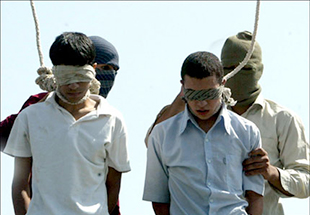
Khomeini’s anti-gay positions continue as government policy. According to the U.S. State Department, homosexuals in Iran face harassment and arbitrary arrests by Iranian security forces, though they are reportedly vague about publicizing the specific charges of sodomy and homosexuality. In July 2016, Iran hanged a gay teenager for a crime he allegedly committed as a juvenile. In 2008, the British government granted asylum to a gay Iranian teenager, citing estimates that Iran had executed between 4,000 and 6,000 gays and Lesbians since 1979. (Sources: Reuters, U.S. Department of State, BBC News, International Business Times, Al-Monitor, Daily Beast, Jerusalem Post, Telegraph, Independent)
Exporting Khomeinism: Support for Global Extremism
Support for Global Extremism
“Our war is one of ideology and does not recognize borders or geography. We must insure the vast mobilization of the soldiers of Islam around the world in our ideological war.”
Ruhollah Khomeini, July 1988
Khomeini directed his followers to spread the ideals of Iran’s Islamic revolution throughout the world. Iran has actualized these efforts through financial, ideological, and material support for global terrorist proxies loyal to Iran’s supreme leader. (Sources: Foreign Affairs, Rand Corporation)
IRGC (Iran)
The Islamic Revolutionary Guard Corps (IRGC)—specifically, the Quds Force—is Iran’s primary instrument for liaising with global extremist organizations. Khomeini created the IRGC to serve as a “people’s army,” constitutionally charged with “extending the sovereignty of God’s law throughout the world” by acting as the government’s representative to international terror groups. The IRGC has provided funding, weapons, and training to groups such as Hezbollah, Kata’ib Hezbollah, and others considered terrorist organizations by the United States and other governments. (Sources: Council on Foreign Relations, Constitution.com, Council on Foreign Relations)
The IRGC continues to develop new regional terrorist groups to serve as Iranian proxies. In April 2016, Israeli media reported that the IRGC was working to create a Hezbollah-like force in the Gaza Strip. The IRGC was reportedly moving funds to the group through a charity named after Khomeini. In May 2015, the IRGC’s Jafari said that Iranian-supported Houthi rebels fighting in Yemen’s civil war are inspired by the Islamic Revolution. According to Jafari, “regional and trans-regional enemies” have failed to stop the revolution from being a role model for other nations. He credited “the blood of our martyrs” for “exporting the Islamic Revolution to the world.” (Sources: Times of Israel, Iranian Students’ News Agency, Tehran Times, Fars News Agency)
Learn more information on IRGC
Hezbollah (Lebanon)
Hezbollah is first and foremost an instrument of the Iranian regime. The Lebanese-based Shiite terrorist group pledged allegiance to Khomeini in its 1985 manifesto and modeled its ideology on Khomeini’s Islamic revolution. The group explicitly states that it “was made victorious by God in Iran.” Per its manifesto, Hezbollah is explicit in its submission and compliance to the dictates of “one leader, wise and just, that of our tutor and faqih (jurist) who fulfills all the necessary conditions: [Ayatollah] Ruhollah Musawi Khomeini.” Hezbollah’s devotion to Khomeini’s Islamic revolution and Khomeinist ideals has led analysts such as Foundation for Defence of Democracy’s Tony Badran to label Hezbollah “the most comprehensive and developed export of the Iranian model.” (Sources: Council on Foreign Relations, Cairo Review of Global Affairs, Weekly Standard)
Khomeini’s influence in Lebanon spread during his exile from Iran in the 1960s and 1970s. During this time, Khomeini learned and taught at Shiite religious institutions in Iraq alongside Shiites from around the world. In this way, Khomeini cultivated a following of students, including not only Iranian followers, but Lebanese Shiites who returned home indoctrinated to Khomeini’s teachings. (Sources: Foundation for Defense of Democracies, Weekly Standard,PBS, Wilson Center)
Faced with persecution, Iranian anti-shah Shiites also began making inroads into Lebanon in the early 1970s. In 1975, Iranian-born Lebanese cleric Musa Sadr created the Amal party in Lebanon, an armed militia that included many Iranians. Sadr also worked with the anti-shah Lebanese-based Liberation Movement of Iran (LMI), which included Iranian figures such as Mostafa Chamran, who would later serve as Khomeini’s first defense minister. Through these networks, Shiite members of the PLO—including future Hezbollah military commander Imad Mughniyeh—helped the Khomeinists acquire weapons and military training. (Sources: Foundation for Defense of Democracies, Weekly Standard, PBS, Wilson Center, BBC News, Asharq al-Awsat)
After Israel’s 1982 invasion of Lebanon, a group of hardline, Khomeinist Amal members broke off from the group to organize a more militant response with other Lebanese Shiites. This proto-Hezbollah group carried out the 1983 attack on U.S. barracks in Beirut and other attacks on U.S., French, and Israeli forces. In 1985, the newly formed Hezbollah declared its loyalty to Iran’s supreme leader in its official manifesto. The manifesto also demanded the expulsion of “aggressive Israeli forces” from Lebanon, called for Israel’s destruction, and demanded the creation of an Islamic state in Lebanon. Hezbollah’s deputy secretary-general Naim Qassem called Khomeini’s philosophy of vilayat-e faqih “the reason for Hezbollah’s establishment.” Iran, in turn, viewed Hezbollah as an opportunity to extend its influence, and Khomeini’s government provided the group with funding, training, and weaponry. (Sources: Wilson Center, Los Angeles Times, New York Times, Al-Monitor, BBC News, BBC News, Al-Akbar, Atlantic, PBS, Council on Foreign Relations)
Hezbollah has since maintained its loyalty to the regime of Khomeini’s successor, Supreme Leader Ali Khamenei. For example, Hezbollah and the IRGC reportedly agreed in January 2010 to cooperate in attacking Israeli, U.S., and Western targets. In 2012, Hezbollah pledged to defend Iran against any attack by the United States or Israel. The group has also joined the IRGC in its ongoing fight to support the Assad regime in Syria. In turn, Khamenei has pledged Iran’s continued support for Hezbollah, a “source of honor for the Muslim world.” (Sources: Washington Institute for Near East Policy, Daily News Egypt, BBC News, Jerusalem Post)
Learn more information on Hezbollah
Badr Organization (Iraq)
The Badr Organization is a Shiite political party and paramilitary force that reportedly serves as “Iran’s oldest proxy in Iraq,” according to Reuters. The Badr Organization adheres to the Khomeinist ideal of vilayat-e faqih, pledging loyalty to the Khomeinist leadership and institutions of Iran. One Iraqi official has described the group as “easily” the most powerful force in Iraq, stronger even than Iraqi Prime Minister Haider al-Abadi. Given the group’s deep ties to Iran and its political and military preeminence, analysts have compared the Badr Organization in Iraq to Hezbollah in Lebanon. (Sources: Reuters, Foreign Policy, Reuters, Globe and Mail)
Formed in 1983 under the name “the Badr Brigades,” the group originally served as the military wing of the Supreme Council for the Islamic Revolution in Iraq (SCIRI), an Iraqi Shiite political party aimed at bringing Khomeini’s Islamic Revolution to Iraq. During the 1980-1988 Iran-Iraq War, SCIRI’s Badr Brigades fought alongside the IRGC against the Iraqi military. From 1983 to 2003, the Badr Brigades continued to operate out of Iran, carrying out intermediary attacks in southern Iraq. When SCIRI reemerged in Iraq in March 2003, the group insisted that it was not pushing for an Iranian-style government, despite the group’s name and ongoing ties to Tehran. (Sources: Middle East Forum, Foreign Policy, BBC News)
The Badr Organization consistently demonstrates its loyalty to Iran’s supreme leader. In 2011, Badr members celebrated the end of the U.S. military presence in Iraq by plastering the walls of government buildings with posters of Khomeini and Khamenei. In early 2015, Badr leader Hadi al-Amiri reaffirmed his support for Iran’s supreme leader, extolling Khamenei’s “qualifications as an Islamic leader. He is the leader not only for Iranians but the Islamic nation.” (Sources: Fox News, Reuters)
Learn more information on Badr Organization
Kata’ib Hezbollah (Iraq)
Kata’ib Hezbollah (KH) is an Iranian-sponsored, anti-American Shiite militia operating in Iraq. During the U.S.-led war in Iraq that began in 2003, KH earned a reputation for planting deadly roadside bombs and using improvised rocket-assisted mortars to attack U.S. and coalition forces. According to U.S. diplomat Ali Khedery, KH is responsible for “some of the most lethal attacks against U.S. and coalition forces throughout the [U.S.-led war in Iraq].” The group’s leader, Abu Mahdi al-Mohandes, is the alleged mastermind behind the 1983 U.S. and French embassy bombings in Kuwait and the 1985 assassination attempt on Kuwait’s emir. (Sources: Wall Street Journal, U.S. Department of the Treasury, U.S. Government Publishing Office, Foreign Policy, Rand Corporation)
KH’s loyalty to Iran is key to the group’s ideology. A RAND Corporation report claims that “Kata’ib Hezbollah, like Lebanese Hezbollah, is used as a tool to ‘export the Islamic revolution’ as practiced in Tehran.” KH openly accepts Khomeini’s vilayat-e faqih philosophy. KH members swear an oath of loyalty to Iran’s Khamenei, and accept him as their own spiritual leader. After the December 2011 U.S. military withdrawal from Iraq, KH sent fighters to defend the Assad regime in Syria, allegedly at the behest of IRGC-Quds Force commander Qasem Soleimani. KH has continued to prioritize its Khomeinist anti-American agenda, repeatedly boycotting battles against ISIS in which the United States participates. (Sources: Rand Corporation, Reuters, New York Times, Reuters, New York Times, Reuters)
Learn more information on Kata'ib Hezbollah
Asaib Ahl al-Haq (Iraq)
Asaib Ahl al-Haq (AAH) is an Iranian-backed Shiite militia and political party operating primarily in Iraq, as well as in Syria and Lebanon. Formed in 2006 by Qais al-Khazali, AAH has approximately 10,000 members and is one of the most powerful Shiite militias in Iraq. Until the U.S. military withdrawal from Iraq in December 2011, AAH launched over 6,000 attacks on American and Iraqi forces. The group seeks to promote Iran’s political and religious influence in Iraq, maintain Shiite control over Iraq, and oust any remaining Western vestiges from the country. (Sources: Voice of America, Washington Post, Institute for the Study of War, Washington Institute for Near East Policy)
AAH is devoted to vilayat-e faqih, and overtly displays its loyalty to Iran’s leaders. The group is reportedly under the coordination of the Quds Force’s Soleimani. According to analyst Sam Wyer of the Institute for the Study of War, AAH has “displayed its commitment to figures of the ‘tradition of the Iranian Revolution,’ including Ruhollah Khomeini, Ali Khamenei, Kazim al-Haeri, and Mahmoud Hashemi Shahroudi.” (Sources: Associated Press, Reuters, Institute for the Study of War)
Wyer characterized AAH as a Khomeinist organization that aims “to create a suitable environment for the return of Imam Mahdi through the imposition of strict Shi’a Islamic governance.” Wyer’s assessment is corroborated by Guardian Middle East correspondent Martin Chulov, who called AAH a “proxy arm of the Revolutionary Guards’ al-Quds Brigades, whose main brief is to export Iran’s 30-year-old Islamic Revolution.” (Sources: Institute for the Study of War, Guardian)
Learn more information on Asaib Ahl al-Haq
Hezbollah al-Hejaz (Saudi Arabia)
Hezbollah al-Hejaz, a.k.a. Saudi Hezbollah, is a Shiite terrorist organization that formed in May 1987 to target U.S. and Saudi interests there and abroad. The group is reportedly sponsored by Iran and related to the Lebanese Hezbollah terrorist group. Hezbollah al-Hejaz adheres to the Khomeinist philosophy of vilayat-e faqih and is loyal to Iran’s supreme leader. According to U.S. authorities, Iran has provided logistic and military support to the group. Hezbollah al-Hejaz reportedly seeks to spread the vilayat-e faqih philosophy—and loyalty to Iran’s supreme leader—inside Saudi Arabia. (Sources: Al Arabiya, U.S. Department of Justice)
The Saudi government outlawed Hezbollah al-Hejaz, forcing its members to allegedly train in Lebanon, Iran, and Syria. According to the U.S. District Court in Washington, D.C., Hezbollah al-Hejaz was responsible—with Iranian support—for the 1996 bombing of the Khobar Towers military barracks, an attack which left 19 U.S. citizens dead and 372 people wounded. (Sources: New York Times, New York Times, FBI, Washington Institute for Near East Policy)
Khomeini’s Legacy: Lasting Effects in Iran
“Serve the nation from now on.”
Ruhollah Khomeini, February 6, 1979
Khomeini died at the age of 86 on June 3, 1989, 12 days after undergoing surgery for intestinal bleeding. The Institute for Compilation and Publication of Imam Khomeini’s Works, a quasi-governmental body that presides over the dissemination of Khomeini’s writings and ideology, maintains a number of historical sites associated with Khomeini. According to the institute, Khomeini’s childhood home in the western Iranian city of Khomein receives hundreds of thousands of visitors each year. (Sources: Los Angeles Times, Institute for Compilation and Publication of Imam Khomeini’s Works)
After Khomeini’s death, a cult-like following developed within Iran, with Khomeini’s tomb—referred to as “the holy shrine”—in Tehran serving as a pilgrimage site for many Iranians. One such follower, Iranian Ozra Noroozi, drove almost four hours to visit in 1990 because, “We loved the Imam so much that now we love his tomb. We pray that God will give victory to the Imam’s revolution.” Iranian merchant Abdul Reza called the tomb “a place all Muslims must come, not just Iranians. This is not Mecca, but it is like Mecca. Everyone must visit.” Tehran mechanic Ali Fooladi credited Khomeini with bringing “the true religion of this country back to the people” and defeating “the heathens.” By 2015, the shrine had turned into a sprawling complex with shops, a museum, a hotel, and thousands of parking spots, prompting Deutsche Welle to call it “the most expensive mausoleum in the world.” However, the Guardian reported that fewer Iranians are visiting the shrine. “No one remembers the revolution or Imam Khomeini anymore,” one visitor told the Guardian, citing Iranians’ preoccupation with economic problems. (Sources: Institute for Compilation and Publication of Imam Khomeini’s Works, New York Times, Al-Monitor, Guardian)

Nonetheless, Supreme Leader Ali Khamenei has used the anniversary of Khomeini’s death to reinforce his and Khomeini’s harsh positions. During the 25th anniversary in June 2014, for example, Khamenei railed against U.S. sanctions, which have failed to bring Iran “to its knees.” In June 2015, on the 26th anniversary of Khomeini’s death, Khamenei warned Iranians against distorting Khomeini’s character. The rebuke was a response to public debate over whether renovations to Khomeini’s mausoleum were too extravagant. Tens of thousands of people reportedly attend the anniversary ceremonies at Khomeini’s tomb. While the anniversary is celebrated in Iran, Iranian embassies, and countries sympathetic to Iran, it is met with protests in other parts of the world. A June 2015 commemoration at an Islamic center in Ontario, Canada, drew 250 protesters, primarily from Iranian Canadian and Jewish groups, according to media reports. (Sources: Los Angeles Times, Al-Monitor, Radio Free Europe Radio Liberty, Greater Kashmir, Tehran Times, Vice News)
Khomeini’s Descendants and the Alleged Iranian Distortion of Khomeinism
Khomeini’s descendants view themselves as the “faithful custodians” of his legacy, according to grandson Ali Eshragi. Despite Khomeini’s implementation of totalitarian policies in Iran, several of his descendants have spoken out against the current Iranian government’s restrictive policies—such as government censorship and restrictions on women—claiming that they are not in line with Khomeini’s original ideals. Khomeini’s descendants accuse government hardliners of perverting Khomeinism into a system of oppression of the Iranian people—even though Khomeini himself sanctioned many of the oppressive policies they protest. (Source: Asia Times,Adnkronos International, New Republic, Telegraph,Adnkronos International,
In a 2003 BBC interview, Khomeini’s eldest grandson, Hossein Khomeini, called for Iran to have a national referendum on Iran’s Islamic system of government. He argued that the majority of people who voted for the system in 1979 are now a minority in Iran compared with the country’s younger population. Khomeini told Al Arabiya in 2006 that “Freedom needs to come to Iran in any way possible, whether by internal development or external interference.” (Sources: BBC News, Asia Times)